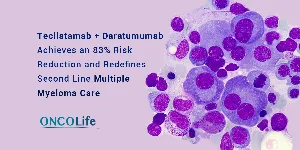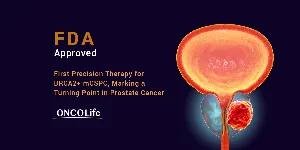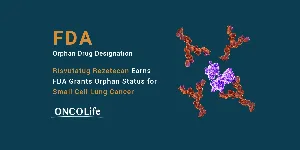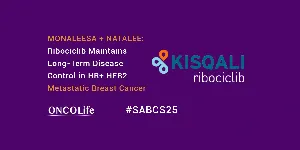Protecting Good Bacteria with Adjusted Antibiotic Doses During Treatment

12 October 2023
Researchers at the University of St Andrews, in collaboration with international teams, have discovered that adjusting antibiotic doses in tuberculosis treatment can protect beneficial bacteria in the body. The study, published in The Lancet Microbe, found that certain antibiotic combinations, especially those with lower rifampicin dosages, allowed for faster recovery of the body's essential microbiota.
The human body coexists with billions of microorganisms, collectively known as the microbiota. While a majority of these are beneficial and play crucial roles in immunity and digestion, a tiny fraction can cause diseases, necessitating the use of antibiotics. However, a side effect of antibiotic use, especially in tuberculosis (TB) treatment, is the unintentional destruction of beneficial bacteria.
The Dual Challenge of AntibioticsTreatment: Eradicating 'Bad' Bacteria While Safeguarding the 'Good
The study focused on the impact of various antibiotic combinations on the respiratory microbiome of TB patients. The researchers found that the most significant "killing effect" of the antibiotics on the microbiota was evident during the first two weeks of treatment. But most bacteria began to recover after this period, reaching pre-treatment levels within two months.
Tuberculosis is often treated with combinations of four antibiotics. Seven of these combinations were studied. While all combinations had a depressing effect on the microbial community, only two combinations – one containing 35 milligrams per kilogram of rifampicin, and the other containing 20 milligrams per kilogram of rifampicin, supplemented by 400mg of moxifloxacin – achieved significant killing of the microbiota.
Importantly, microbiota recovered faster in the latter combination which contained a lower dose of rifampicin. This implies that a carefully balanced antibiotic course can achieve the purpose of killing the disease-causing bacteria while preserving the useful ones that the body needs to recover to full health.
Commenting on these findings, the lead researcher, Dr. Wilber Sabiiti, from the University of St Andrews' School of Medicine, said: “For a long time, assessment of drug safety has only focused on the effect caused against human body organs such as the liver and the brain. This has neglected the effect caused against the useful microorganisms that live with humans and make them thrive. Many studies prior to ours have shown how the presence of these microorganisms helps educate human immunity to resist infections and prevent allergies and diseases like asthma. It is therefore crucial that the view of drug safety is expanded to include the safety of useful microorganisms in the human body.”
The study employed RNA, a genetic molecule linked with live cells, enabling the team to exclusively measure microorganisms that were alive before and after antibiotic exposure. This approach is in contrast to many previous studies that relied on DNA, which remains stable long after cell death, making it a less accurate indicator of live bacteria post-antibiotic exposure.
The research also touched on the concerning rise of antibiotic-resistant bacteria. Prolonged exposure to antibiotics can lead bacteria to develop resistance, turning areas rich in microorganisms, like the lungs and gut, into potential breeding grounds for superbugs. Further studies are required to understand this phenomenon better and devise strategies to prevent the emergence of antibiotic resistance.
The collaborative study involved participants and researchers from Tanzania and universities in the Netherlands, Germany, and the UK, representing the Pan African Consortium for Evaluation of anti-TB Antibiotics (PanACEA).
Effect of seven anti-tuberculosis treatment regimens on sputum microbiome: a retrospective analysis of the HIGHRIF study 2 and PanACEA MAMS-TB clinical trials
Summary / Background: Respiratory tract microbiota has been described as the gatekeeper for respiratory health. We aimed to assess the impact of standard-of-care and experimental anti-tuberculosis treatment regimens on the respiratory microbiome and implications for treatment outcomes. Methods: In this retrospective study, we analysed the sputum microbiome of participants with tuberculosis treated with six experimental regimens versus standard-of-care who were part of the HIGHRIF study 2 (NCT00760149) and PanACEA MAMS-TB (NCT01785186) clinical trials across a 3-month treatment follow-up period. Samples were from participants in Mbeya, Kilimanjaro, Bagamoyo, and Dar es Salaam, Tanzania. Experimental regimens were composed of different combinations of rifampicin (R), isoniazid (H), pyrazinamide (Z), ethambutol (E), moxifloxacin (M), and a new drug, SQ109 (Q). Reverse transcription was used to create complementary DNA for each participant's total sputum RNA and the V3-V4 region of the 16S rRNA gene was sequenced using the Illumina metagenomic technique. Qiime was used to analyse the amplicon sequence variants and estimate alpha diversity. Descriptive statistics were applied to assess differences in alpha diversity pre-treatment and post-treatment initiation and the effect of each treatment regimen. Findings: Sequence data were obtained from 397 pre-treatment and post-treatment samples taken between Sept 26, 2008, and June 30, 2015, across seven treatment regimens. Pre-treatment microbiome (206 genera) was dominated by Firmicutes (2860 [44%] of 6500 amplicon sequence variants [ASVs]) at the phylum level and Streptococcus (2340 [36%] ASVs) at the genus level. Two regimens had a significant depressing effect on the microbiome after 2 weeks of treatment, HR20mg/kgZM (Shannon diversity index p=0·0041) and HR35mg/kgZE (p=0·027). Gram-negative bacteria were the most sensitive to bactericidal activity of treatment with the highest number of species suppressed being under the moxifloxacin regimen. By week 12 after treatment initiation, microbiomes had recovered to pre-treatment level except for the HR35mg/kgZE regimen and for genus Mycobacterium, which did not show recovery across all regimens. Tuberculosis culture conversion to negative by week 8 of treatment was associated with clearance of genus Neisseria, with a 98% reduction of the pre-treatment level. Interpretation: HR20mg/kgZM was effective against tuberculosis without limiting microbiome recovery, which implies a shorter efficacious anti-tuberculosis regimen with improved treatment outcomes might be achieved without harming the commensal microbiota. Funding: European and Developing Countries Clinical Trials Partnership and German Ministry of Education and Research.








Comments
No Comments Yet!